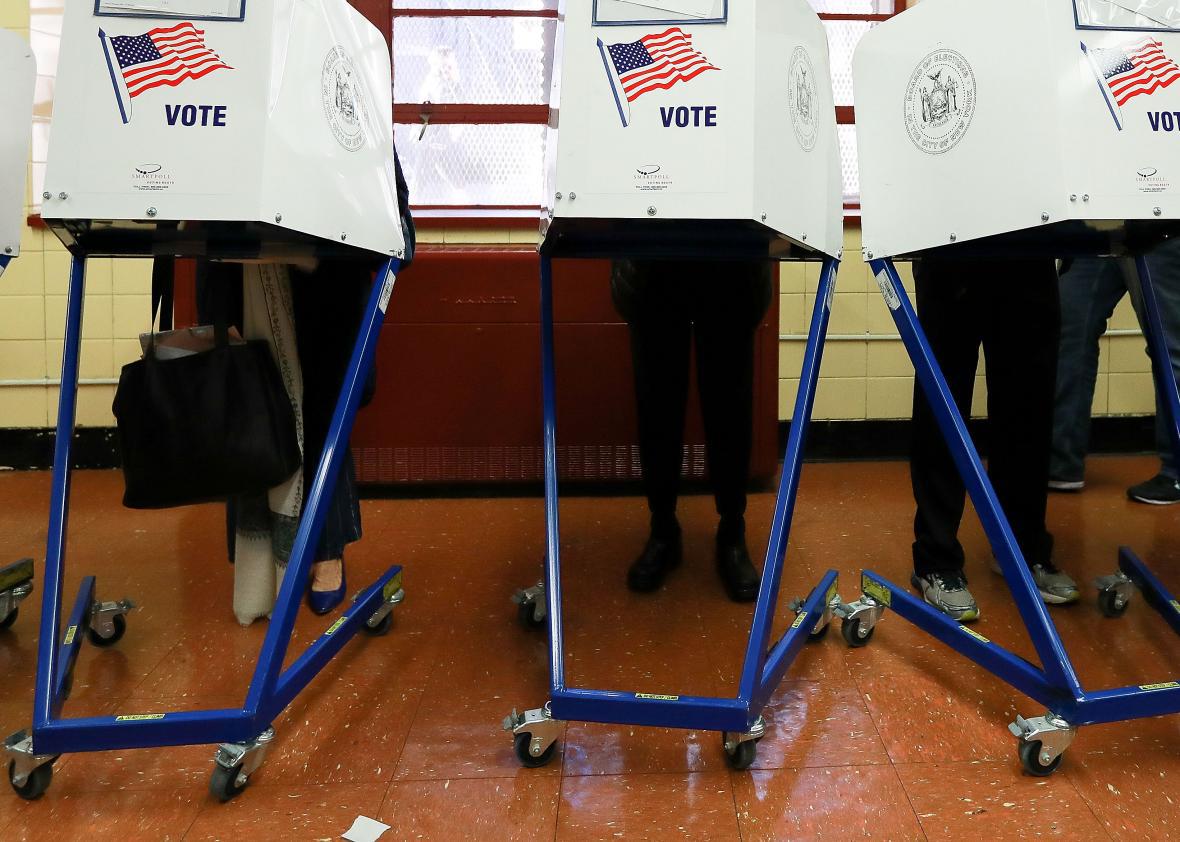As some astute readers have noticed, VoteCastr’s estimated early vote totals do not add up to the totals released publicly by a number of states. In Nevada, the secretary of state has reported that 770,149 total ballots were cast early while VoteCastr has tracked only 593,893. In Colorado, the secretary of state had counted 1,852,029 votes as of Monday while VoteCastr has tracked 1,656,947. And in Florida, the secretary of state has reported a total of 6,511,712 early and mail-in ballots compared with 3,680,611 for VoteCastr.
What accounts for the difference? VoteCastr is able to apply its microtargeting model when it knows the identities of early voters. (I explained the ins and outs of that model here.) Because of the way early votes are reported—essentially, it’s a piecemeal process that happens at the county level—VoteCastr does not have specific voter identity information for every single early ballot. As a consequence, VoteCastr’s top-line numbers are going to be smaller than the ones you might find elsewhere. But, VoteCastr argues, its data are more robust.
The VoteCastr team believes using voter preference estimates allows it to make more specific forecasts about the early voting split. Most modelers sort returned ballots by party affiliation in those states where that information is available. There are several problems with sorting by party, the most obvious of which is that those models ignore the sizeable swath of voters who are unaffiliated with one of the major parties. Meanwhile, those slightly more advanced models that divvy up independent voters among candidates using broad demographic information—such as county or race—are making guesses based on far less information than VoteCastr has. Their advantage over the VoteCastr model, however, is that they have a larger sample to work with. VoteCastr believes a closer reading of a slightly smaller sample set is better than a broader reading of a larger one.
What about Jon Ralston, the longtime Nevada journalist, who effectively called his home state for Clinton last week after getting a look at partial early voting numbers? Ralston has more intimate knowledge of Nevada than pretty much any journalist working today, and his predictions very well may come true. One major difference between Ralston’s approach and VoteCastr’s is that he is making an explicit prediction about what will happen, while VoteCastr is focused on the present: not who will win, but who is leading now. As of 2:10 p.m. EST, VoteCastr has Hillary Clinton leading by 10,000 votes.
VoteCastr works with a third-party vendor to collect early voting data, which means there’s some lag time before specific voter identities make it into their system. As a result, VoteCastr has decided to stop tracking any additional early votes today and will instead focus its resources on tracking real-time turnout at polling stations.
One additional wrinkle in Nevada: VoteCastr made a mistake in its pre–Election Day polling by listing Jill Stein as an option, even though the Green Party candidate is not on the state ballot. The VoteCastr team believes Stein is unlikely to draw enough support to significantly affect their estimates, but the jury is still out on that. Consider that a specific example of how this is a real-time experiment, one that remains untested on this scale.
